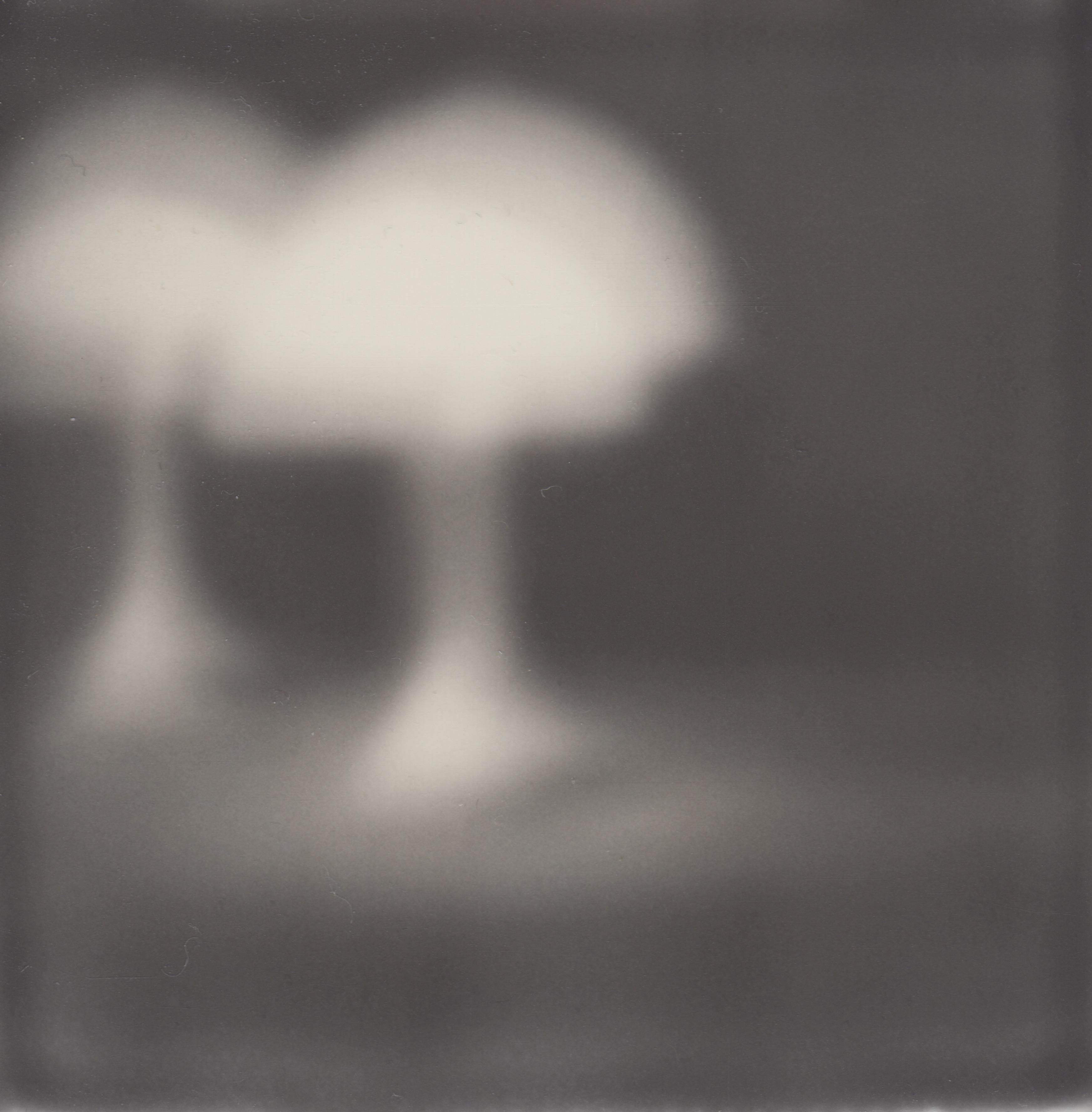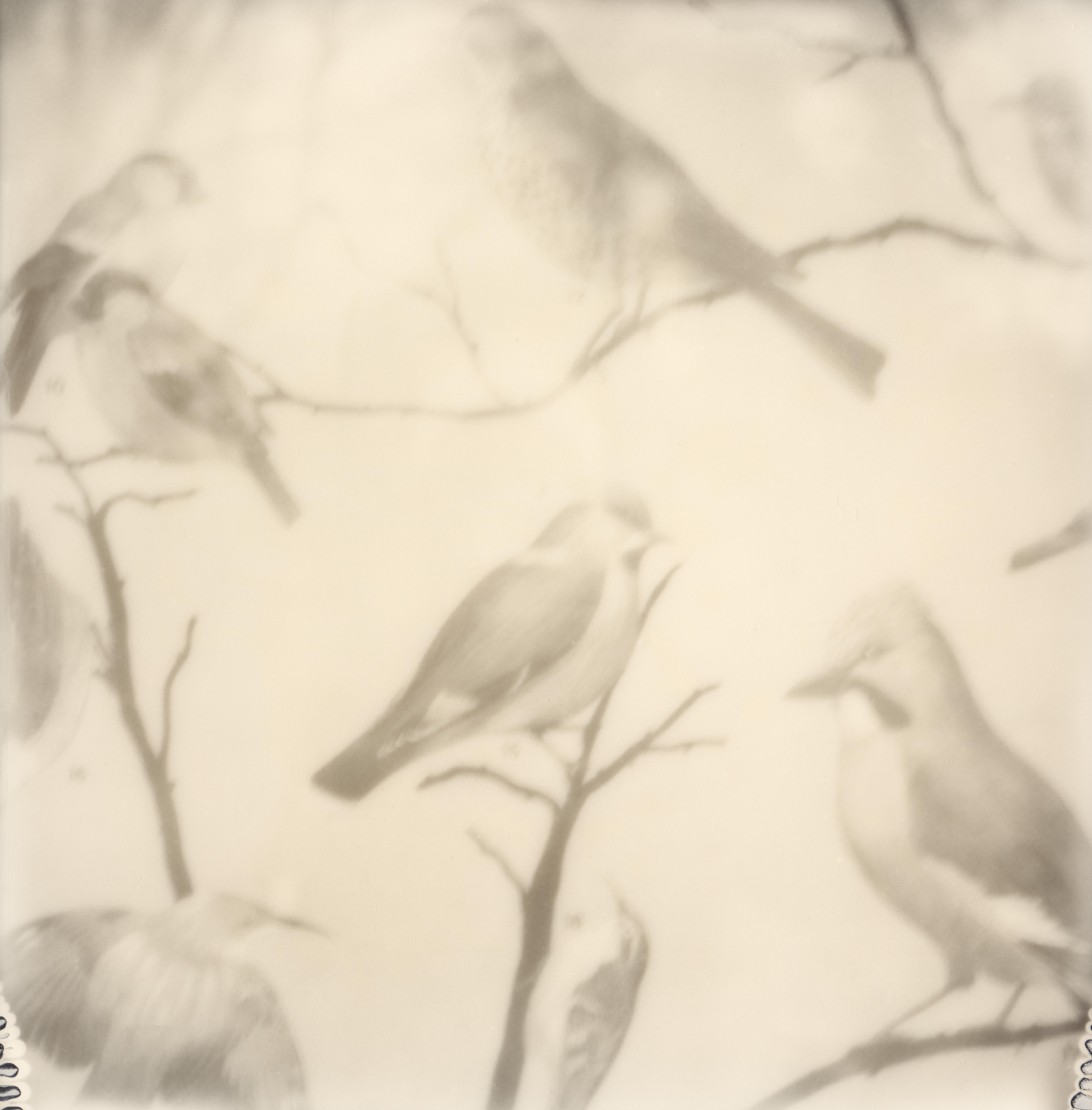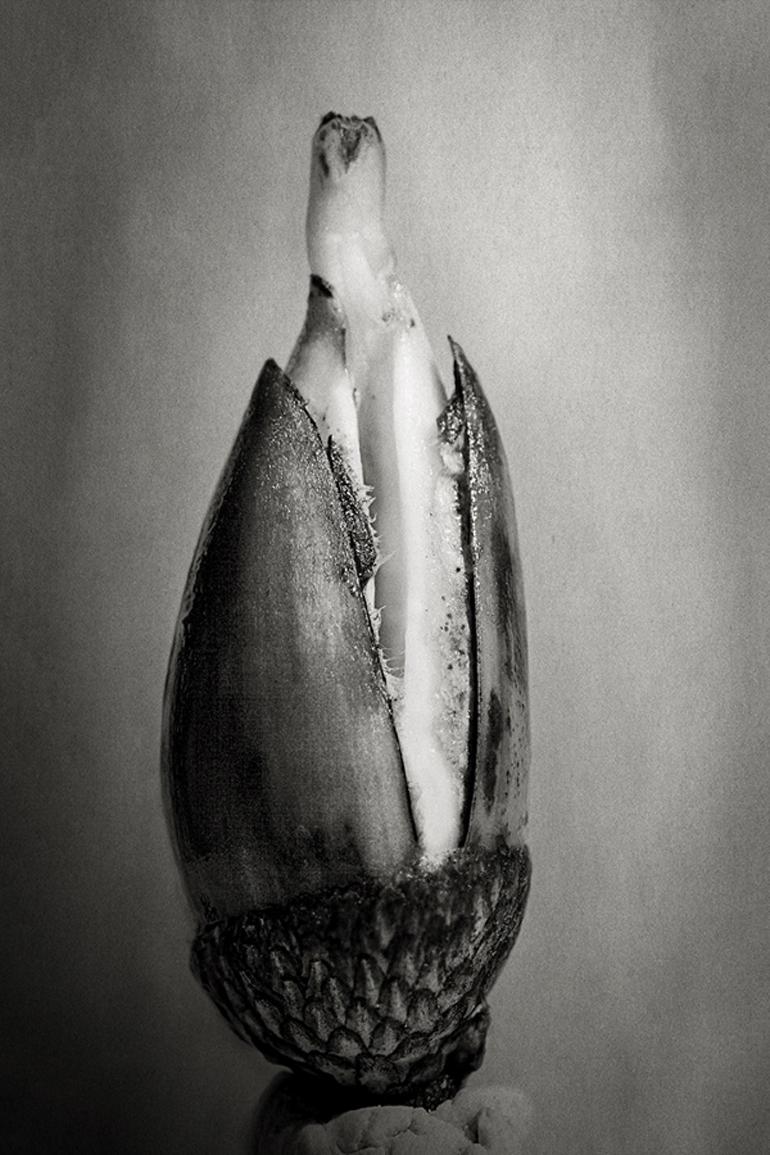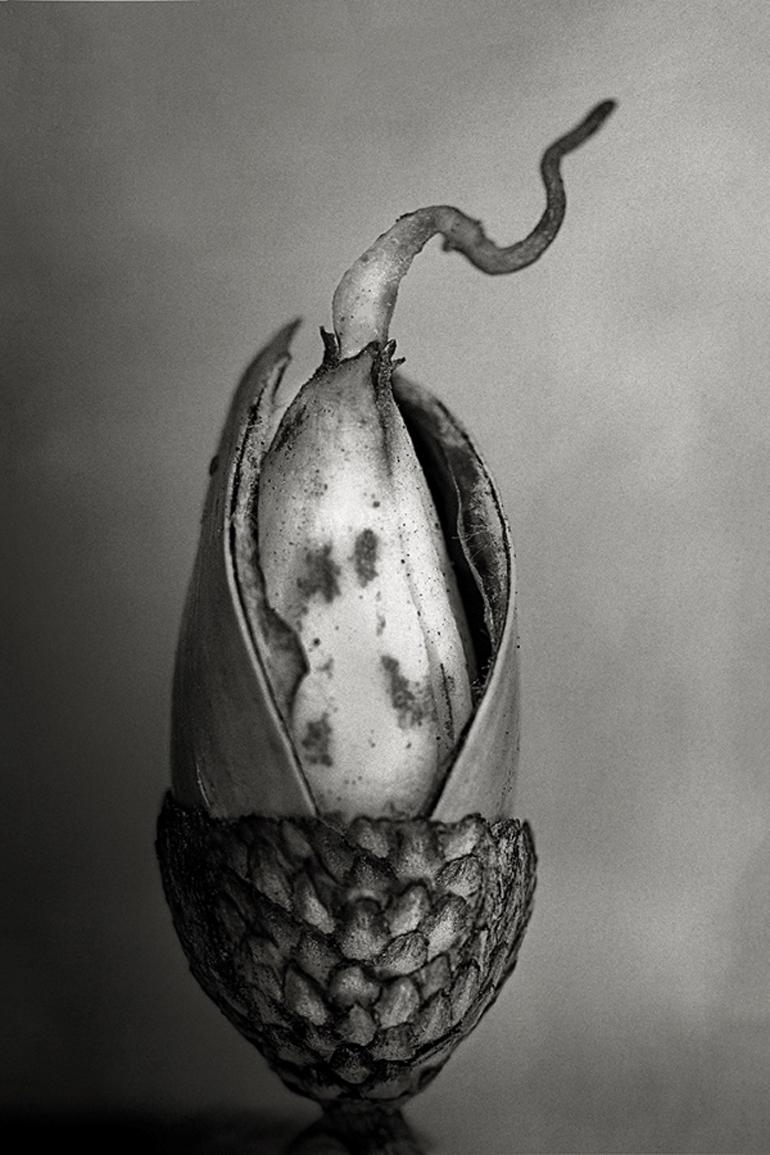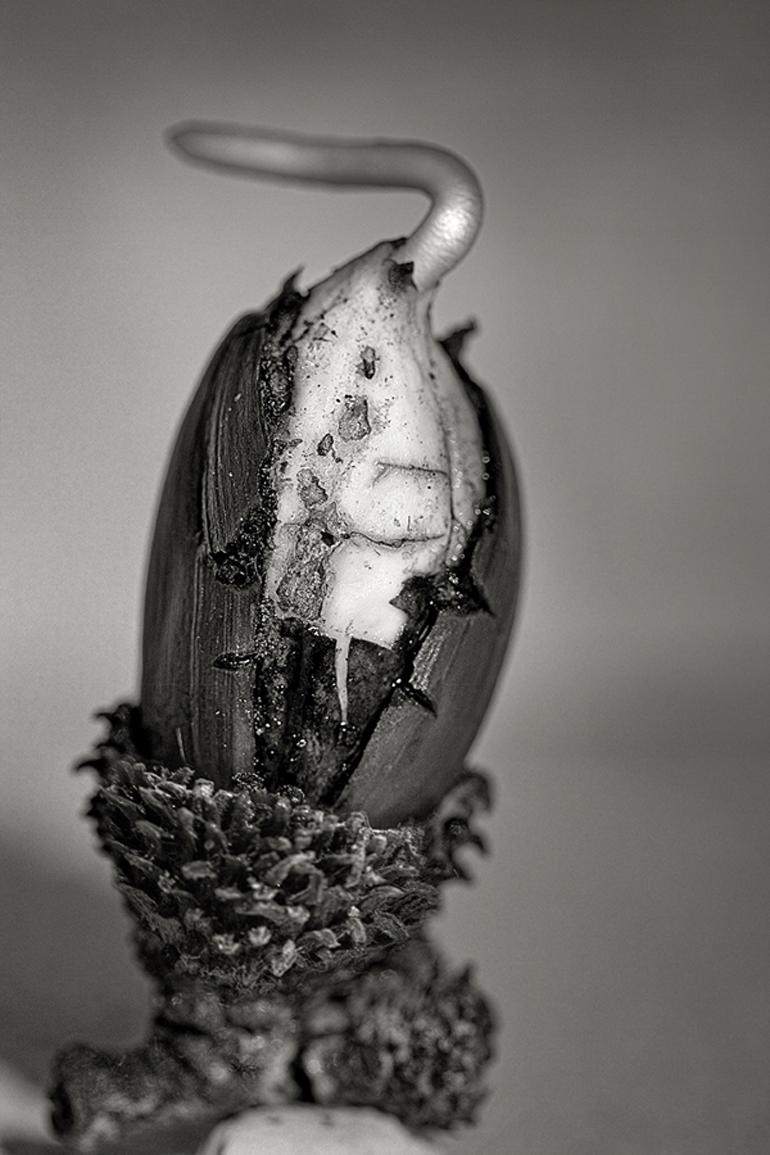Andy WarholHammer & Sickle, acetate of iconic image, given by Warhol to Chromacomp Inc. 1976
1976
About the Item
- Creator:Andy Warhol (1928 - 1987, American)
- Creation Year:1976
- Dimensions:Height: 15.75 in (40.01 cm)Width: 19.75 in (50.17 cm)Depth: 1.5 in (3.81 cm)
- Medium:
- Movement & Style:
- Period:
- Condition:
- Gallery Location:New York, NY
- Reference Number:1stDibs: LU1745214125762
Andy Warhol
The name of American artist Andy Warhol is all but synonymous with Pop art, the movement he helped shape in the 1960s. He is known for his clever appropriation of motifs and images from popular advertising and commercials, which he integrated into graphic, vibrant works that utilized mass-production technologies such as printmaking, photography and silkscreening. Later in his career, Warhol expanded his oeuvre to include other forms of media, founding Interview magazine and producing fashion shoots and films on-site at the Factory, his world-famous studio in New York.
Born and educated in in Pittsburgh, Warhol moved to New York City in 1949 and built a successful career as a commercial illustrator. Although he made whimsical drawings as a hobby during these years, his career as a fine artist began in the mid-1950s with ink-blot drawings and hand-drawn silkscreens. The 1955 lithograph You Can Lead a Shoe to Water illustrates how he incorporated in his artwork advertising styles and techniques, in this case shoe commercials.
As a child, Warhol was often sick and spent much of his time in bed, where he would make sketches and put together collections of movie-star photographs. He described this period as formative in terms of his skills and interests. Indeed, Warhol remained obsessed with celebrities throughout his career, often producing series devoted to a famous face or an object from the popular culture, such as Chairman Mao or Campbell’s tomato soup. The 1967 silkscreen Marilyn 25 embodies his love of bright color and famous subjects.
Warhol was a prominent cultural figure in New York during the 1960s, ’70s and ’80s. The Factory was a gathering place for the era’s celebrities, writers, drag queens and fellow artists, and collaboration was common. To this day, Warhol remains one of the most important artists of the 20th century and continues to exert influence on contemporary creators.
Find a collection of original Andy Warhol art on 1stDibs.
- ShippingRetrieving quote...Ships From: New York, NY
- Return PolicyA return for this item may be initiated within 1 day of delivery.
- Baroness de Waldner - unique acetate of Brazilian actress, with provenanceBy Andy WarholLocated in New York, NYAndy Warhol Baroness de Waldner, ca. 1975 Unique Acetate positive This piece comes with a signed letter of provenance from the representative of Chromacomp, Warhol's printer. Frame i...Category
1970s Pop Art Portrait Photography
MaterialsPhotographic Film, Mixed Media
- Marcel ProustBy Andy WarholLocated in New York, NYAndy Warhol Marcel Proust, ca. 1976 Acetate positive acquired directly from Chromacomp, Inc. Andy Warhol's printer in the 1970s. Accompanied by Letter of Provenance from the representative of Chromacomp, Andy Warhol's printer Frame included: Elegantly framed in a museum quality white wood frame with UV plexiglass. Measurements: Frame: 17.75 x 14.75 x 1.5 inches Photograph: 10.75 x 7.75 inches This unique photographic positive acetate is of the 19th and early 20th century French novelist Marcel Proust, who's chef d'oeuvre A la recherche du temps perdu inspired some Warhol titles. Warhol would transfer the acetate to a transparency, allowing an image to be magnified and projected onto a screen. Warhol created a silkscreen painting of Marcel Proust and sent this acetate to his printer, Chromacomp, Inc. for consideration as a silkscreen multiple, which was never made. This acetate was brought by Warhol to Eunice and Jackson Lowell, owners of Chromacomp,Inc. a fine art printing studio in New York City. During the 1970s and 1980s, it was the premier atelier for fine art limited edition silkscreen prints; indeed, Chromacomp was the largest studio producing fine art prints in the world for artists such as Andy Warhol, Leroy Neiman, Erte, Robert Natkin, Larry Zox, David Hockney and many more. All of the plates were done by hand and in some cases photographically. Warhol had considered creating limited edition prints with Chromacomp of his famous portrait of Proust based upon this photographic image. The original painting was commissioned by art dealer Marie-Louise Jeanneret for a group of Italian collectors and avid Proust enthusiasts, Warhol's original four acrylic and silkscreen ink on linen works were based on a famous 1895 photograph of the French novelist captured by Otto Wegener. Marcel Proust, the distinguished French novelist, literary critic, and essayist, achieved renowned for his monumental 1908 seven-volume novel In Search of Lost Time. The literary masterpiece delved into the intricacies of memory, time and the profound complexity of the human experience. Proust's literary genius revolutionized the landscape of literature, leaving an enduring impact on the Parisian cultural scene at the turn of the century. About 50 years later, Andy Warhol emerged as a visionary artist who challenged artistic conventions, exploring themes that resonated with Proust's own ideas. Warhol, a trailblazer in his own right, delved into philosophical reflections on consumerism, mass production and the nature of fame. His artistic endeavors mirrored Proust's explorations, albeit through a contemporary lens, as he sought to redefine the boundaries of art and popular culture. About Andy Warhol: Isn’t life a series of images that change as they repeat themselves? —Andy Warhol Andy Warhol’s (1928–1987) art encapsulates the 1960s through the 1980s in New York. By imitating the familiar aesthetics of mass media, advertising, and celebrity culture, Warhol blurred the boundaries between his work and the world that inspired it, producing images that have become as pervasive as their sources. Warhol grew up in a working-class suburb of Pittsburgh. His parents were Slovak immigrants, and he was the only member of his family to attend college. He entered the Carnegie Institute of Technology (now Carnegie Mellon University) in 1945, where he majored in pictorial design. After graduation, he moved to New York with fellow student Philip Pearlstein and found steady work as a commercial illustrator at several magazines, including Vogue, Harper’s Bazaar, and the New Yorker. Throughout the 1950s Warhol enjoyed a successful career as a commercial artist, winning several commendations from the Art Directors Club and the American Institute of Graphic Arts. He had his first solo exhibition at the Hugo Gallery in 1952, showing drawings based on the writings of Truman Capote; three years later his work was included in a group show at the Museum of Modern Art for the first time. The year 1960 marked a turning point in Warhol’s prolific career. He painted his first works based on comics and advertisements, enlarging and transferring the source images onto canvas using a projector. In 1961 Warhol showed these hand-painted works, including Little King (1961) and Saturday’s Popeye (1961), in a window display at the department store Bonwit Teller; in 1962 he painted his famous Campbell’s Soup Cans, thirty-two separate canvases, each depicting a canned soup of a different flavor. Soon after, Warhol began to borrow not only the subject matter of printed media, but the technology as well. Incorporating the silkscreen technique, he created grids of stamps, Coca-Cola bottles, shipping and handling labels, dollar bills, coffee...Category
1970s Pop Art Black and White Photography
MaterialsPhotographic Film
- Nicola (Nicky) WeymouthBy Andy WarholLocated in New York, NYAndy Warhol Nicola (Nicky) Weymouth, ca. 1976 Acetate positive, acquired directly from Chromacomp, Inc. Andy Warhol's printer in the 1970s. Accompanied by a Letter of Provenance from the representative of Chromacomp Unique Frame included: Elegantly framed in a museum quality white wood frame with UV plexiglass: Measurements: Frame: 18 x 15.5 x 1.5 inches Acetate: 11 x 8 inches This is the original, unique photographic acetate positive taken by Andy Warhol as the basis for his portrait of Nicky Weymouth, that came from Andy Warhol's studio, The Factory to his printer. It was acquired directly from Chromacomp, Inc. Andy Warhol's printer in the 1970s. It is accompanied by a Letter of Provenance from the representative of Chromacomp. This is one of the images used by Andy Warhol to create his iconic portrait of the socialite Nicola Samuel Weymouth, also called Nicky Weymouth, Nicky Waymouth, Nicky Lane Weymouth or Nicky Samuel. Weymouth (nee Samuel) was a British socialite, who went on to briefly marry the jewelry designer Kenneth Lane, whom she met through Warhol. This acetate positive is unique, and was sent to Chromacomp because Warhol was considering making a silkscreen out of this portrait. As Bob Colacello, former Editor in Chief of Interview magazine (and right hand man to Andy Warhol), explained, "many hands were involved in the rather mechanical silkscreening process... but only Andy in all the years I knew him, worked on the acetates." An acetate is a photographic negative or positive transferred to a transparency, allowing an image to be magnified and projected onto a screen. As only Andy worked on the acetates, it was the last original step prior to the screenprinting of an image, and the most important element in Warhol's creative process for silkscreening. Warhol realized the value of his unique original acetates like this one, and is known to have traded the acetates for valuable services. This acetate was brought by Warhol to Eunice and Jackson Lowell, owners of Chromacomp, a fine art printing studio in NYC, and was acquired directly from the Lowell's private collection. During the 1970s and 80s, Chromacomp was the premier atelier for fine art limited edition silkscreen prints; indeed, Chromacomp was the largest studio producing fine art prints in the world for artists such as Andy Warhol, Leroy Neiman, Erte, Robert Natkin, Larry Zox, David Hockney and many more. All of the plates were done by hand and in some cases photographically. Famed printer Alexander Heinrici worked for Eunice & Jackson Lowell at Chromacomp and brought Andy Warhol in as an account. Shortly after, Warhol or his workers brought in several boxes of photographs, paper and/or acetates and asked Jackson Lowell to use his equipment to enlarge certain images or portions of images. Warhol made comments and or changes and asked the Lowells to print some editions; others were printed elsewhere. Chromacomp Inc. ended up printing Warhol's Mick Jagger Suite and the Ladies & Gentlemen Suite, as well as other works, based on the box of photographic acetates that Warhol brought to them. The Lowell's allowed the printer to be named as Alexander Heinrici rather than Chromacomp, since Heinrici was the one who brought the account in. Other images were never printed by Chromacomp- they were simply being considered by Warhol. Warhol left the remaining acetates with Eunice and Jackson Lowell. After the Lowells closed the shop, the photographs were packed away where they remained for nearly a quarter of a century. This work is exactly as it was delivered from the factory. Unevenly cut by Warhol himself. This work is accompanied by a signed letter of provenance from the representative of Chromacomp, Andy Warhol's printer for many of his works in the 1970s. About Andy Warhol: Isn’t life a series of images that change as they repeat themselves? —Andy Warhol Andy Warhol’s (1928–1987) art encapsulates the 1960s through the 1980s in New York. By imitating the familiar aesthetics of mass media, advertising, and celebrity culture, Warhol blurred the boundaries between his work and the world that inspired it, producing images that have become as pervasive as their sources. Warhol grew up in a working-class suburb of Pittsburgh. His parents were Slovak immigrants, and he was the only member of his family to attend college. He entered the Carnegie Institute of Technology (now Carnegie Mellon University) in 1945, where he majored in pictorial design. After graduation, he moved to New York with fellow student Philip Pearlstein and found steady work as a commercial illustrator at several magazines, including Vogue, Harper’s Bazaar, and the New Yorker. Throughout the 1950s Warhol enjoyed a successful career as a commercial artist, winning several commendations from the Art Directors Club and the American Institute of Graphic Arts. He had his first solo exhibition at the Hugo Gallery in 1952, showing drawings based on the writings of Truman Capote; three years later his work was included in a group show at the Museum of Modern Art for the first time. The year 1960 marked a turning point in Warhol’s prolific career. He painted his first works based on comics and advertisements, enlarging and transferring the source images onto canvas using a projector. In 1961 Warhol showed these hand-painted works, including Little King (1961) and Saturday’s Popeye (1961), in a window display at the department store Bonwit Teller; in 1962 he painted his famous Campbell’s Soup Cans, thirty-two separate canvases, each depicting a canned soup of a different flavor. Soon after, Warhol began to borrow not only the subject matter of printed media, but the technology as well. Incorporating the silkscreen technique, he created grids of stamps, Coca-Cola bottles, shipping and handling labels, dollar bills, coffee labels...Category
1970s Pop Art Black and White Photography
MaterialsPhotographic Film
- Andy Warhol in New York, 1976, 2007, hand signed photograph 8/60 for MuseumBy Michael ChildersLocated in New York, NYMichael Childers Andy Warhol in New York, 1976, 2007 Photographic print Signed and numbered 8/60 on the front in black felt tip marker Frame included ...Category
Early 2000s Pop Art Black and White Photography
MaterialsPhotographic Paper, Permanent Marker
- Ivan KarpBy Andy WarholLocated in New York, NYAndy Warhol Portrait of Ivan Karp, ca. 1975 Acetate negative acquired directly from Chromacomp, Inc. Andy Warhol's printer in the 1970s. Accompanied by a Letter of Provenance and Au...Category
1970s Pop Art Black and White Photography
MaterialsPhotographic Paper
- Andy Warhol in Paris with Sitting Bird 1976 signed photo Palm Springs Art MuseumBy Michael ChildersLocated in New York, NYMichael Childers Andy Warhol in Paris with Sitting Bird 1976, 2007 Photographic print hand signed in black felt tip pen lower right front; the back be...Category
1970s Pop Art Black and White Photography
MaterialsPhotographic Paper, Permanent Marker
- Waiting At The Bar - Still Life Black and White Film Photographic Print FramedBy Pia ClodiLocated in Salzburg, ATWaiting At The Bar - Still Life Black and White Photographic Print Framed Like many of Pia Clodi’s works, this black and white photograph evokes a human presence, even when one cann...Category
21st Century and Contemporary Contemporary Still-life Photography
MaterialsPhotographic Paper, Photographic Film, Black and White, Polaroid
- Bird Print - Still Life Black and White Film Photographic Print FramedBy Pia ClodiLocated in Salzburg, ATBird Print - Still Life Black and White Photographic Print Framed Pia Clodi’s works have a beautiful way of breathing life into the everyday. Taking moments from throughout her life...Category
21st Century and Contemporary Contemporary Still-life Photography
MaterialsPhotographic Film, Photographic Paper, Black and White, Polaroid
- Oak Seed #6By Beth MoonLocated in Sante Fe, NM“The creation of a thousand forests is in one acorn...” Ralph Waldo Emerson In the dirt. This is where life begins. The journey starts in darkness. Trees often inspire the gaze u...Category
2010s Contemporary Black and White Photography
MaterialsPhotographic Paper, Platinum, Photographic Film
- Oak Seed #4By Beth MoonLocated in Sante Fe, NM“The creation of a thousand forests is in one acorn...” Ralph Waldo Emerson In the dirt. This is where life begins. The journey starts in darkness. Trees often inspire the gaze u...Category
2010s Contemporary Black and White Photography
MaterialsPhotographic Film, Photographic Paper, Platinum
- Oak Seed #14By Beth MoonLocated in Sante Fe, NM“The creation of a thousand forests is in one acorn...” Ralph Waldo Emerson In the dirt. This is where life begins. The journey starts in darkness. Trees often inspire the gaze u...Category
2010s Contemporary Black and White Photography
MaterialsPhotographic Film, Photographic Paper, Platinum
- Oak Seed #3By Beth MoonLocated in Sante Fe, NM“The creation of a thousand forests is in one acorn...” Ralph Waldo Emerson In the dirt. This is where life begins. The journey starts in darkness. Trees often inspire the gaze u...Category
2010s Contemporary Black and White Photography
MaterialsPhotographic Film, Photographic Paper, Platinum
Recently Viewed
View AllRead More
Andy Warhol Piles Up the Gifts in This Fanciful Christmas Print
Created in the late 1950s, it’s one of a surprising number of holiday-themed works by the prolific Pop artist.
Jordan Schnitzer Started Collecting Warhol Prints Very Early — and Never Stopped
The Portland, Oregon, native has amassed a collection of art so outstanding that multiple museums bear his name and several exhibitions at any given time are showing pieces he owns. We caught up with Schnitzer to find out how he got started collecting Warhol and where his pieces can be found right now.
